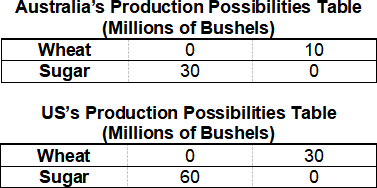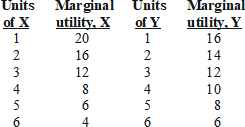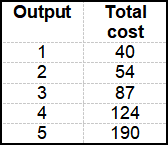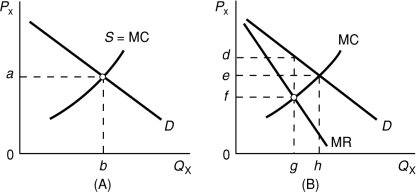PRACTICE EXAMINATION QUARTER 1, 2021
Hello, dear friend, you can consult us at any time if you have any questions, add WeChat: daixieit
PRACTICE EXAMINATION
QUARTER 1, 2021
PART A: Technical questions
Answer all 20 multiple choice questions in part A. Each question is worth 1.5 points for a total of 30 points towards your final assessment.
1) In the loanable funds model and the neoclassical macroeconomic model
a. Savings always equal Investment but unemployment can occur in the long run.
b. Savings and Investment are rarely equal and the economy is usually in a disequilbrium state.
c. The interest rate adjusts to ensure savings equal investment.
d. Savings responds to changes in interest rates but Investment does not and leakages can be greater than injections.
2) Assuming no government or foreign sector, if the MPC is 0.8, the multiplier is_______, and a decrease in consumption of $20 billion will __________ the level of GDP by_________.
a. 0.8, increase, $20b.
b. 5, decrease, $100b.
c. 0.8, decrease, $20b.
d. 5, increase, $100b.
Answer the next two questions on the basis of the following Keynesian cross diagram.

3) In the above figure, the movement from AE1 to AE2 is caused by:
a. a $200 billion increase in investment expenditure.
b. a $100 billion increase in taxes.
c. a $100 billion increase in government purchases.
d. a $300 billion increase in real GDP.
e. a $100 billion increase in income.
4) Based on the information presented in the above figure, if investment expenditure declines by $50 billion, then real income will
a. increase by $150 billion.
b. increase by $125 billion.
c. decrease by $125 billion.
d. decrease by $150 billion.
e. decrease by $50 billion.
5) When countries specialise in producing those goods in which they have a comparative advantage, they
a. do not necessarily maximise their combined output, and they also do not necessarily allocate their resources more efficiently.
b. maximise their combined output, but they do not necessarily allocate their resources more efficiently.
c. allocate their resources more efficiently, but they do not necessarily maximise their combined output.
d. maximise their combined output and allocate their resources more efficiently.
Below are hypothetical production possibilities tables for Australia and the US showing the maximum amount of wheat and sugar possible if all resources are devoted to either wheat or sugar. Use the data to answer the following question.

6) Refer to the data above. Which statement is correct?
a. Australia has a comparative advantage in producing wheat
b. Australia has an absolute advantage in producing sugar
c. The US has a comparative and absolute advantage in producing sugar
d. Australia has a comparative advantage in producing sugar
7) Demand-pull inflation:
a. occurs when total spending in the economy is excessive.
b. is measured differently than cost-push inflation.
c. can be present even during an economic depression.
d. is also called "hyperinflation."
8) In regards to the AD/AS model, which of the following statements is incorrect
a. A rise in AD occurs due to an increase in government purchases.
b. A rise in prices shifts the AD curve to the left
c. A productivity improvement increases AS (shifts right)
d. A shift down in the AE curve in the Keynesian cross due to a fall in wealth also shifts AD to the left.
9) Which of the following monetary transmission mechanisms is correct for expansionary monetary policy?
a. The central bank sells bonds, the interest rate falls, aggregate demand shifts right and GDP increases.
b. The central bank sells bonds, the interest rate rises, aggregate demand shifts right and GDP increases.
c. The central bank buys bonds, the interest rate rises, aggregate demand shifts left and GDP decreases.
d. The central bank buys bonds, the interest rate falls, aggregate demand shifts right and GDP increases.
10) Suppose that Ms. Spencer is currently exhausting her money income by purchasing 10 units of A and 8 units of B at prices of $2 and $4 respectively. The marginal utility of the last units of A and B are 16 and 24 respectively. These data suggest that Ms. Spencer:
a. has preferences that are at odds with the principle of diminishing marginal utility.
b. considers A and B to be complementary goods.
c. should buy less A and more B.
d. should buy less B and more A.
Answer the next question on the basis of the following marginal utility data for products X and Y. Assume that the prices of X and Y are $4 and $2 respectively and that the consumer's income is $18.

11) Refer to the above data. What quantities of X and Y should be purchased to maximize utility?
a. 2 of X and 1 of Y
b. 4 of X and 5 of Y
c. 2 of X and 5 of Y
d. 2 of X and 6 of Y
12) Which of the following is most likely to be a variable cost?
a. fuel and power payments
b. interest on business loans
c. rental payments on IBM equipment
d. real estate taxes
Answer the next question on the basis of the following cost data:

13) Refer to the above data. Given a price of $33, the profit-maximizing level of output for this firm:
a. is 3.
b. is 4.
c. is 5.
d. cannot be determined from the information given.
Use the following to answer question 14:

14) Refer to the above diagrams, which pertain to a purely competitive firm producing output q and the industry in which it operates. Which of the following is correct?
a. The diagrams portray neither long-run nor short-run equilibrium.
b. The diagrams portray both long-run and short-run equilibrium.
c. The diagrams portray short-run equilibrium, but not long-run equilibrium.
d. The diagrams portray long-run equilibrium, but not short-run equilibrium.
15) A firm is producing an output such that the benefit from one more unit is more than the cost of producing that additional unit. This means the firm is:
a. producing more output than allocative efficiency requires.
b. producing less output than allocative efficiency requires.
c. achieving productive efficiency.
d. producing an inefficient output, but we cannot say whether output should be increased or decreased.
Use the following to answer question 16):

16) Refer to the above diagrams. With the industry structure represented by diagram:
a. (A) there will be only a normal profit in the long run, while in (B) an economic profit can persist.
b. (A) price exceeds marginal cost, resulting in allocative inefficiency.
c. (B) price equals marginal cost, resulting in allocative efficiency.
d. (B) equilibrium price and quantity will be e and h, respectively.
17) Suppose that an industry is characterized by a few firms and tacit collusion. We would expect that:
a. Monopoly pricing will prevail and large profits will be received by firms.
b. One dominant firm will set prices and others will follow.
c. One firm will offer a price discount if any new entrant tries to undercut them and other incumbents will follow.
d. All of the above.
18) Depletion of fish stocks through overfishing is a good example of the:
a. Coase theorem.
b. law of increasing returns.
c. tragedy of the commons.
d. law of conservation of matter and energy.
19) A negative externality or spill-over cost occurs when:
a. firms fail to achieve allocative efficiency by under allocating resources.
b. firms fail to achieve productive efficiency.
c. price exceeds marginal cost.
d. the total cost of producing a good exceeds the costs borne by the producer.
20) Suppose an upstream firm pollutes a river which imposes costs on a downstream firm. The following matrix shows the monthly payoffs to the upstream and downstream firms when the upstream firm installs, and does not install, a filter

If the upstream firm has the legal right pollute and bargaining is costless, which of the following statements is correct?
a. The socially optimal outcome occurs when the upstream firm installs a filter.
b. The downstream firm can induce the upstream firm to install a filter by paying the upstream firm $25 per month.
c. The downstream firm will offer the upstream firm $35 to install a filter.
d. The upstream firm will install a filter to maximise their own profits.
PART B: Critical analysis
In the exam you will be asked to “Answer Questions 21 (15 marks) and Question 22 (10 marks). Question 22 will offer you a choice of 1 of 2 questions).
The following is a list of questions from each week’s “Guide to reading” and the lecture material which will help you prepare for the PART B questions.
Week 4 (Topic 4)
Explain the meaning of positive and negative demand shocks. What happens to the economy if such shocks occur? Illustrate with an example. Why is the economy not self-correcting? What can be done about it?
Week 6 (Topic 6)
a) The orthodox theory suggests that consumers are sovereign and that therefore free markets are welfare-enhancing machines. Governments shouldn’t interfere. What are the long-run impacts of this perspective?
b) If consumers are not sovereign then we can justify doing something. What could be done?
Week 8 (Topic 8)
Explain why monopoly and oligopoly market structures undermine the idea that free markets are efficient.
Oligopolists are encouraged to collude. Explain why this occurs? What is the impact of oligopolistic behaviour on consumer welfare?
In what other ways do major corporations shape the broader economic environment? What is the role of the State in modern capitalist economies?
Week 9 (Topics 9 and 10)
Use orthodox economic theory to explain the problem of global warming (climate change) and suggest policy solutions. What is the unique problem of such global environmental problems? What is the political economy explanation for global warming (climate change)? What policy solutions would be recommended?
Please Note: The questions in Part B could be from any area of the topics listed above and need not necessarily be limited to the specific area of focus in the question above.
2023-09-06